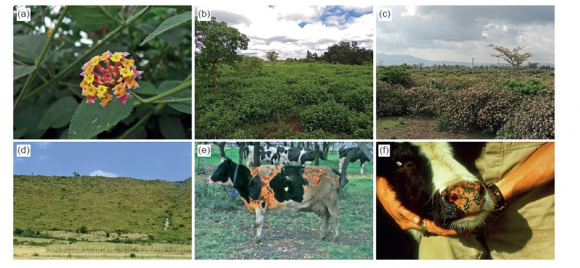As many invasive non-native (or alien) species pose a global threat to human well-being and livelihoods, an international team of researchers, including C·I·B researchers and associates, have recently developed a new transparent ranking system for plants and animals moved around the globe by humans to find out which are the worst.
Their study was published in the British Ecological Society journal Methods in Ecology and Evolution.
Alien species can cause harm in many ways in areas to which they are introduced. Besides the effects on biodiversity, which can lead to extinctions of native species and transformations of whole landscapes and ecosystems, they can also have wide-ranging effects on human health, livelihoods, and well-being. For example, the tiger mosquito (Aedes albopictus), which is originally from Southeast Asia, is spreading devastating diseases like dengue fever, and is therefore considered a significant threat to human well-being in many countries around the world.
Not only diseases and insects are problematic for humans. The cane toad (Rhinella marina) for example, which was first introduced in Australia to control a crop pest, has spread uncontrollably over large areas. This is causing major problems for indigenous people as they can no longer practice certain traditions like bush meat hunting due to the lack of prey caused by this invader, and their well-being and livelihoods are therefore greatly affected.
Such impacts on human livelihoods and well-being have received little attention to date, or they are underrated in assessments primarily concerned with monetary costs and values.
“We acknowledge that money does not equal human happiness and well-being, and does not have the same meaning everywhere in the world” says Sven Bacher, professor of ecology at the University of Fribourg and lead author of the study. On the basis of a Nobel prize-winning welfare economics approach, an international team of 17 scientists from three continents proposes a new Socio-Economic Classification of Alien Taxa (SEICAT).
Bacher explains: “The system classifies alien species on how they affect what people are able to do in their lives, namely their capabilities.” Assuming that what people do in their lives represents their preferred choices of all their opportunities, SEICAT uses the magnitude of changes in people’s activities for classification on a 5-point scale, from minimal concern (no changes in activities) to massive (irreversible disappearance of an activity from a region).
“By focusing on changes in peoples’ activities, SEICAT captures impacts of introduced species on human well-being that systems based on monetary values cannot”, explains Sabrina Kumschick from Stellenbosch University and senior author of the paper.
Impacts on all constituents of human well-being, such as health, material assets, safety, and social and cultural relationships are measured at the same scale thus allowing impacts of different species to be compared and ranked. In contrast to monetary approaches, SEICAT assessments can be made even when data is scarce. Large numbers of introduced species can be ranked in a relatively short time to find out which are the worst.
This novel tool for comparing and ranking introduced species according to their effects on human well-being and livelihoods can also be used to underpin decisions on which species to spend resources on when it comes to management.
“Such insights are crucial in an age when managers simply cannot afford to tackle all invasive species” says Dave Richardson, Director of the Centre for Invasion Biology, a co-author of the paper.
 Read the paper in Methods in Ecology and Evolution
Read the paper in Methods in Ecology and Evolution
Sven Bacher et al. (2017). Socio-economic impact classification of alien taxa (SEICAT), Methods in Ecology and Evolution. DOI: 10.1111/2041-210X.12844



